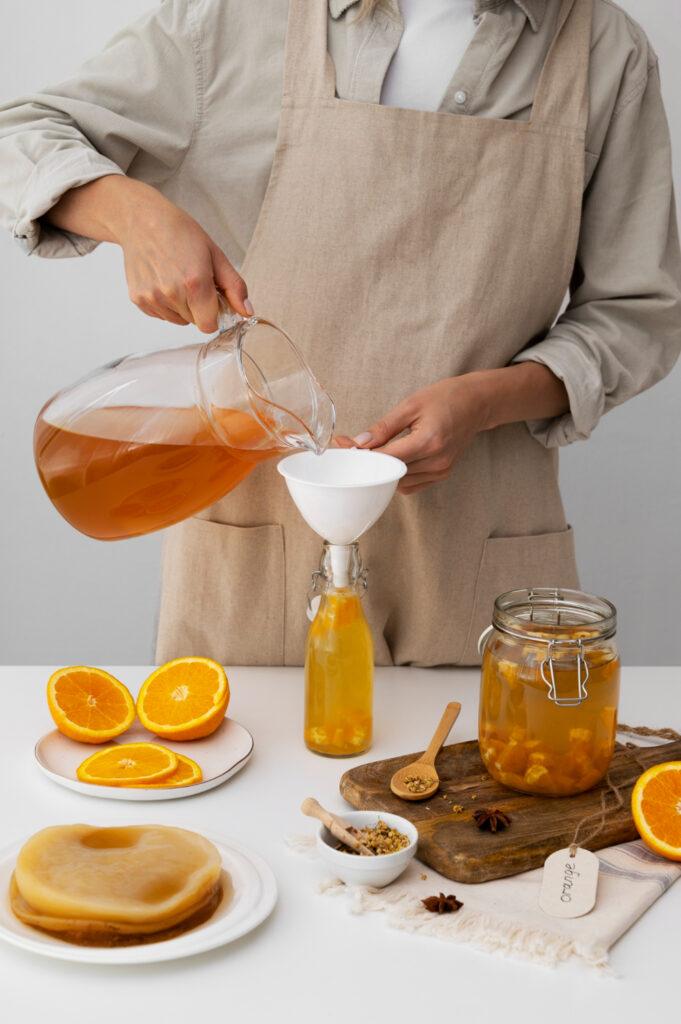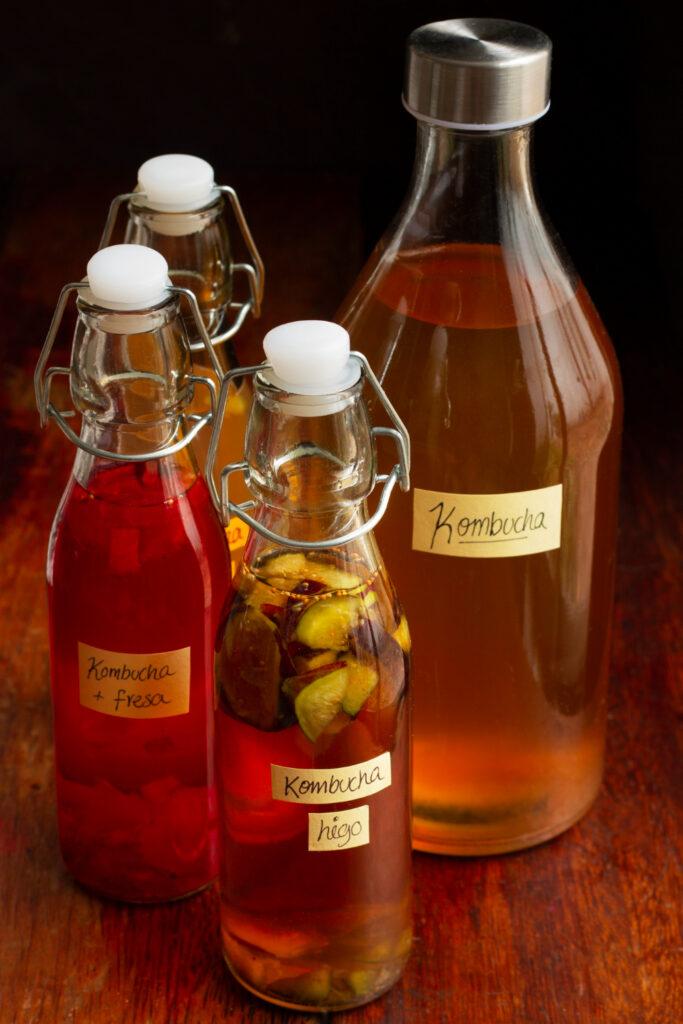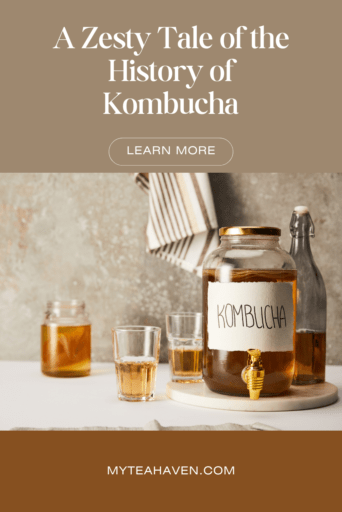A Zesty Tale of the History of Kombucha
History of Kombucha: A Journey Through Time and Culture
Ah, Kombucha – the effervescent drink that has captured the hearts of many seeking a refreshing and health-boosting beverage. Today we’re going on a journey through the captivating history of Kombucha. We’ll be exploring its roots, evolution, and the reasons why it has become a beloved beverage around the globe.
We are a participant in the Amazon Services LLC Associates Program, an affiliate advertising program designed to provide a means for us to earn fees by linking to Amazon.com and related sites. This post may contain affiliate links which means we may receive a commission, at no cost to you, for purchases made using our links. Please see my disclosure to learn more. Unless otherwise stated, all prices are in US$.
Historical Roots
The historical roots of Kombucha are as intriguing as the drink itself, tracing back over two millennia. The journey of this fermented tea is thought to begin in ancient China during the Qin Dynasty around 220 B.C. According to legend, Kombucha was aptly named the “Tea of Immortality” due to its reputed health benefits.
Spreading to Japan
From its humble origins in China, Kombucha found its way to Japan. There it gained prominence for its unique taste and potential health properties. The tea continued its migration across cultures, reaching Russia and Eastern Europe.
The Migration and Evolution of Kombucha
The exact path of Kombucha’s spread is shrouded in mystery, with anecdotes and tales passed down through generations. Its popularity in different regions led to varied brewing methods, incorporating local teas and sugars, adding distinctive regional flavors to the concoction.
In Russia, Kombucha was embraced for its purported health benefits and was often referred to as “tea kvass.” The bubbly nature and tangy taste captivated the palates of those who encountered it, further contributing to its allure.
As Kombucha traversed the continents, each culture added its unique touch to the brewing process. The symbiotic culture of bacteria and yeast (SCOBY) is a vital component in Kombucha brewing. It became an integral part of the tradition, passed down from one generation to the next.

Diversity Lends to Adaptability
The historical roots of Kombucha are not only a testament to its endurance but also a reflection of its adaptability. The tea has absorbed the essence of diverse cultures, evolving and thriving through the ages. Its journey through time continues to be a source of fascination for Kombucha lovers, connecting us to the ancient traditions that birthed this effervescent elixir.

The Big Book of Kombucha
Brewing, Flavoring, and Enjoying the Health Benefits of Fermented Tea
Brew your own kombucha at home! With more than 400 recipes, including 268 unique flavor combinations, you can get exactly the taste you want — for a fraction of the store-bought price. This complete guide, from the proprietors of Kombucha Kamp, shows you how to do it from start to finish, with illustrated step-by-step instructions and troubleshooting tips. The book also includes information on the many health benefits of kombucha, fascinating details of the drink’s history, and recipes for delicious foods and drinks you can make with kombucha (including some irresistible cocktails!).
Popularity Surge
The popularity of Kombucha experienced a remarkable resurgence in recent years. This resurgence marked a significant shift from its historical roots to the modern era. The 21st century witnessed a Kombucha renaissance, as this once-niche beverage captured the attention and taste buds of a diverse and health-conscious audience.
Recent Rise in Popularity
The revival of Kombucha can be attributed to a confluence of factors. With the increasing interest in wellness and the pursuit of healthier lifestyles, individuals sought alternatives to sugary sodas and artificial beverages. Kombucha, with its natural fermentation process and purported health benefits, emerged as a refreshing and enticing option.
Health and wellness trends, coupled with a growing awareness of the importance of gut health, propelled Kombucha into the spotlight. As people sought probiotic-rich foods and beverages, Kombucha, with its probiotic content derived from the fermentation process, became a sought-after elixir.

Health Trends and Benefits
Kombucha rode the wave of health trends, positioning itself as more than just a flavorful beverage. Enthusiasts and health-conscious consumers were drawn to the potential benefits associated with Kombucha consumption. Claims of improved digestion, enhanced immune function, and increased energy levels fueled its popularity.
The surge in popularity also found a foothold in the realm of artisanal and craft brewing. Local breweries and passionate homebrewers began experimenting with flavor profiles. By doing so, they pushed the boundaries of traditional Kombucha and introducing innovative and exotic variations to cater to diverse tastes.
As Kombucha gained momentum in popular culture, it found its way onto the shelves of mainstream grocery stores, cafes, and even cocktail menus. This further cemented its status as a beverage of choice for the health-conscious and flavor enthusiasts alike.
The recent rise in Kombucha’s popularity has transformed this ancient elixir into a modern-day phenomenon. Its journey from a relatively obscure drink to a mainstream sensation is a testament to the evolving preferences of consumers seeking both taste and well-being in a single bubbly sip.
A Few Final Thoughts
The history of Kombucha is a tapestry woven with threads of tradition, innovation, and wellness. From ancient China to the bustling shelves of contemporary health stores, the journey of this fermented tea reflects its ability to adapt, evolve, and captivate enthusiasts worldwide.




